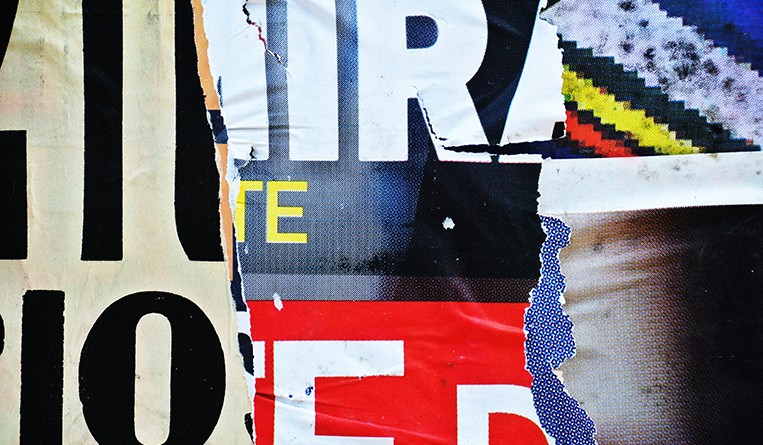The ABCs of typefaces and fonts
31 May 2023

Ensure your typeface software is free, or you might be facing the consequences if you don’t have a licence to use it. — Excel V. Dyquiangco
The secret to producing a quality logo or graphic design is selecting the appropriate typeface. However, there is a lot of misunderstanding about typefaces, fonts, and the laws and legislation that controls them in general. Some people are unaware of the regulations governing typefaces and fonts, while others believe they can freely use any typeface or font without facing any consequences.
A license to use the font software is what you buy when you buy a commercial font. The end user license agreement (EULA) often specifies your legal rights and debt to the licence provider. Licence conditions may also vary depending on the font manufacturers.
Technically speaking, a typeface is different from a font. In simple terms, a typeface refers to a set of design features chosen for letters or other characters, while fonts refer to variations in size and weight, among others, of a specific typeface.

“Since disputes involving a typeface or font are increasing, its IP protection issues have attracted extensive attention of the Chinese IP community,” said Jason Gong, a partner attorney at East & Concord Partners in Beijing. “However, in the context of IP protection for a typeface or font, particularly in the digitalized age, I think the difference between them is not significant because the general methodology and the concrete criteria and measures of protection are almost the same. To make things easier, I will use typeface to cover both typeface and font.”
In China, typefaces are primarily protected under copyright law. Chinese copyright law protects, among others, works of fine art and computer software if they meet the threshold of originality and reproducibility.
Unlike characters composed of alphabets, Chinese is a pictographic one, and the design of a single Chinese character may conspicuously vary, with each having a unique expressive power. Because of this reason, Chinese calligraphy art has a long history, from the ancient seal script, regular script, running script and cursive script to various and creative modern typefaces. Chinese typefaces not only convey emotions and ideas but also embody visual aesthetic significance.
In judicial practice, Chinese characters, or even a single character in an original typeface, are normally regarded as a particular type of work of fine art. Therefore, they can be protected under the copyright law, despite the usual disputed point on whether a typeface possesses originality and whether it can independently form a work of fine art.
Gong said that, as decided by the Supreme People’s Court in 2012, a computer program or software shall not be regarded as a work of fine art when a typeface or multiple typefaces are generated by the program. This is because a work of fine art is defined by the Implementing Regulation of Copyright Act as “two- or three-dimensional works of plastic arts created in lines, colors or other elements which embody aesthetic significance, such as painting, calligraphy and sculpture, etc.”
“Nonetheless, the court further ruled that this kind of software shall be protected under the copyright law, if they meet the threshold of originality,” he said. “As for the digital typefaces generated by the software, like the physical typefaces, they shall be protected as works of fine art under the copyright law. Of course, the threshold is that it possesses certain originality.”
Pointers for designing fonts and typefaces
Jason Gong, a partner attorney at East & Concord Partners in Beijing, provides the following tips and pointers for designing fonts and typefaces:
- Work with reputable and trustworthy partners. Sometimes the company that gets accused of typeface infringement has no idea of the source of the typeface because it outsources the design work to a third party. Gong suggested doing some due diligence investigation beforehand and working with reputable and trustworthy agencies that generally take a cautious position on this issue.
- Contract clause as a precaution. Try to add a clause in the outsourcing contract as a precaution, demanding the design agency to guarantee the delivered work is free of typeface infringement. Otherwise, the agency shall take all the responsibilities for the alleged infringement.
- Ensure the typeface software is free or that you have a licence to use it. In China, several traditional typefaces are free to all. If you are designing something by yourself, such as an online promotional release or marketing flyers, make sure the typeface software you intend to use is free. If you want to use a unique typeface, you must get a licence.

Not fonts but words
In the Philippines, generic typefaces or fonts found in computer programs are not per se subject of protection, but only the word or text in which they appear.
“A mark that appears in a particular typeface and font can be protected as a stylized mark, but use of a generic typeface and font cannot be exclusively claimed by any trademark owner,” said Divina Gracia Pedron, a senior partner at Cruz Marcelo & Tenefrancia in Manila. “However, if the typeface used is an original, meaning it was originally created by the trademark owner, it can be claimed as an integral part of the mark and may qualify for protection. The original typeface may also be considered as a creative work that is copyrightable.”
She added: “Computer codes are protected as literary work in our jurisdiction. They are copyrightable as such. So, when designing a typeface in a particular font, it must be of such character that it is original and creative to qualify for copyright protection. Also, when a typeface in a particular font is used as a design constituting a trademark, it can be claimed as part of a logo that can be protected through trademark registration.”





